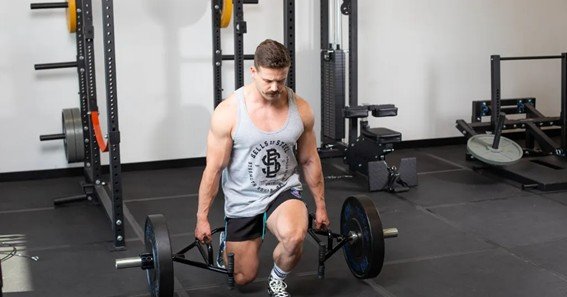A hex bar, also known as a trap bar, is a hexagonally shaped weightlifting barbell that allows the lifter to stand in its center, facilitating exercises like deadlifts and shrugs. Unlike standard Olympic barbells, which typically weigh 45 pounds (20.4 kg), hex bars do not have a standardized weight. Their weight varies depending on the design, size, and manufacturer.
Average Weights of Hex Bars
Hex bars generally weigh between 40 to 70 pounds (18 to 32 kg). However, some models can weigh as little as 19 pounds (8.6 kg) or as much as 80 pounds (36.3 kg). The specific weight depends on factors such as the bar’s dimensions, materials used, and additional features like raised handles or open designs.
Examples of Hex Bar Weights by Brand
| Brand | Model | Weight |
| Bells of Steel | Open Trap Bar 3.0 | 47 lbs (21.3 kg) |
| Rogue Fitness | TB-2 Trap Bar | 60 lbs (27.2 kg) |
| Titan Fitness | Olympic Hex Weight Bar | 44 lbs (20 kg) |
| CAP Barbell | Olympic Trap Bar (Combo Grip) | 52 lbs (23.6 kg) |
| Kabuki Strength | Trap Bar HD | 66 lbs (30 kg) |
Note: These weights are approximate and can vary slightly based on manufacturing tolerances.
Factors Influencing Hex Bar Weight
- Design Variations: Hex bars come in different designs, including standard hexagonal shapes, open-back designs, and models with multiple handle heights. Open-back hex bars, for example, may weigh more due to additional materials used in their construction.
- Material Composition: The type of steel and its thickness contribute to the bar’s overall weight. Heavy-duty hex bars made from thicker steel tubing will naturally weigh more than those made with lighter materials.
- Additional Features: Bars equipped with features like rotating sleeves, adjustable handles, or dual handle heights can have increased weight due to the extra components.
Importance of Knowing Your Hex Bar’s Weight
Accurately tracking the weight you’re lifting is crucial for monitoring progress and ensuring effective training. Since hex bars vary in weight, knowing the exact weight of the bar you’re using allows for precise calculation of total load, aiding in adherence to progressive overload principles.
FAQ
- How can I determine the weight of my hex bar?
Check the manufacturer’s specifications, which are often stamped on the bar or listed in product manuals. If unavailable, use a reliable scale to weigh the bar directly. - Does the weight of a hex bar affect my lifting performance?
Yes, the bar’s weight contributes to the total load lifted. Using a heavier or lighter bar than anticipated can impact training intensity and progression. - Are hex bars suitable for beginners?
Absolutely. Hex bars facilitate a more upright lifting posture, reducing strain on the lower back and making them accessible for lifters of all levels. - Can I use a hex bar for exercises other than deadlifts?
Yes, hex bars are versatile and can be used for shrugs, bent-over rows, and even presses, depending on the bar’s design. - Why is there no standard weight for hex bars?
Unlike Olympic barbells, hex bars are not governed by strict standards, leading to variations in design and weight across different manufacturers.
Understanding the weight of your hex bar is essential for accurate load management and effective training progression. Always verify your equipment’s specifications to ensure consistency in your workouts.
Take a look at this interesting piece horse-fly-mask










